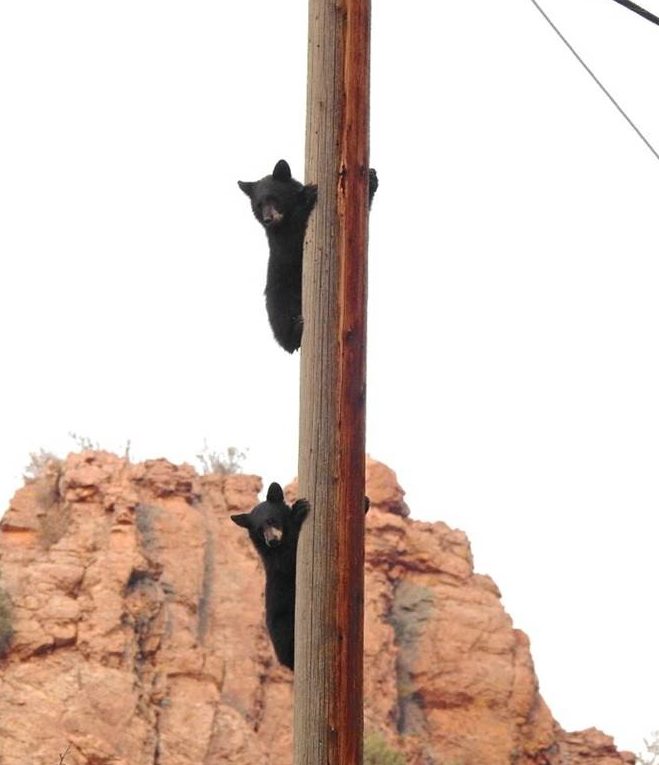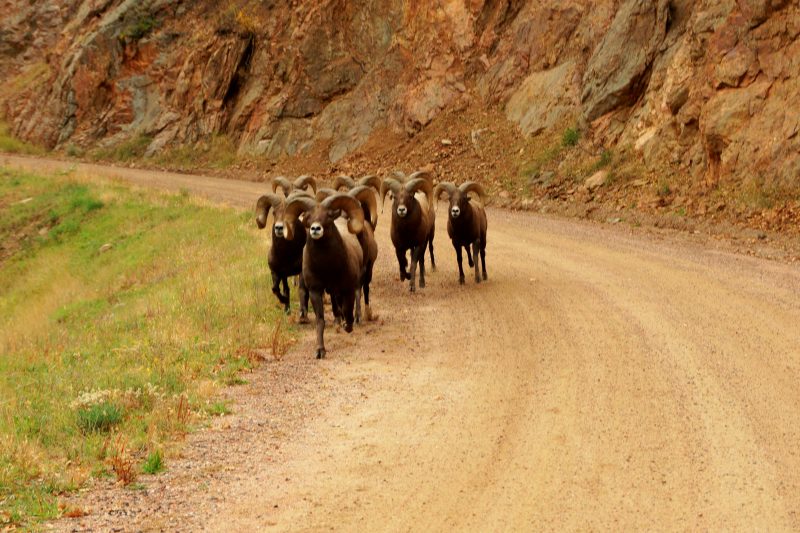
A selfie-less view of wildlife in Waterton Canyon
With a footprint larger than Rhode Island and Delaware combined, the opportunities to experience and observe wildlife in its most natural form are vast at Yellowstone National Park.
But as Public News Service story recently explained, park officials are shifting their focus from the 67 species of mammals that call this park home to the 68th found in this park every single day — humans.
Ryan Atwell, the park's new social science coordinator, described the challenges his team faces with social media. “Every other person seems to be taking a selfie, or looking at a phone instead of watching where they're walking,” he told Public News Service.
Sound familiar? Last summer’s story about visitors in Waterton Canyon using selfie sticks to snap photos with bears made local, national and even international headlines.
The bear activity in the canyon was so extreme in 2015 that Denver Water and Colorado Parks and Wildlife had to close the canyon for two months to protect both animals and humans.
This year, the canyon gates are open, but don’t be fooled. Bears, snakes, sheep and many other species still call Waterton home — and we humans have to watch our step.
So if you plan on hiking the 6.5-mile canyon this summer, we recommend stopping at each of the rest areas — aptly named after some of the most common mammals, birds and serpents found in the canyon — to hydrate and learn more about these popular canyon dwellers.
Let’s take a trip up to the canyon to learn more:
Mile Marker 0.25: Mule Deer Rest Area
Not to be confused with the while tailed deer, the mule deer has large mule-like ears (almost the length of their whole head) and a black forehead with a light grey face. While they may look cute and harmless, these animals can weigh upwards of 400 pounds. Turn those camera phones around the right way and use the zoom feature from a distance to capture these guys. Their favorite feeding times are dawn and dusk, so get to the canyon early for the best chance to see them in action.
Mile Marker 0.6: Great Blue Heron Rest Area
Standing 4-feet tall with a wingspan between 6 and 7 feet, the Great Blue Heron is considered one of the best fisherman in the canyon. This bird can swallow fish much larger than its skinny neck would suggest. This heron does not reach full adult coloring until three years of age, so if you spot one with colorful head plumes, you’ll know it has been catching fish for quite some time. You are most likely to catch a glimpse and snap a picture of the bird while it is out foraging at dawn or dusk. Just don’t get too close, or it will start to squawk loudly and fly away.
Mile Marker 1.9: Black Bear Rest Area
Starting in early May, black bears begin coming out from their winter slumber, skinny, hungry and desperate for food. The bears typically hang around until September, when they finish bulking up for hibernation season. During this time, bears will forage for 20 hours a day.
We’ve spotted a couple different types of bear in the canyon this year. If you spot one yourself, please keep a safe distance and watch these other tips from a couple of ‘Da Bears Superfans.
Mile Marker 3.1: Mountain Lion Rest Area
The Puma Concolor, “cat of one color,” is an extremely rare sight. The Colorado Trail Foundation reports up to two mountain lion sightings in this area each year. If you do manage to catch a glimpse however, use extreme caution. Mountain lions can be as large as 8-feet long and weigh upwards of 150 pounds. They can also leap at least 15-feet straight up in the air and 40-feet forward. If you find yourself face-to-face with one, do not back away. Stand tall and stare the cat right in the eyes. Mountain lions like to stalk and chase down prey, so if you start to run you’ll just look like a slow moving meal.
Mile Marker 4.5: Rattlesnake Rest Area
Colorado is home to around 30 species of snake, and the only venomous ones are the rattlesnakes. Rattlesnakes use their camouflage to blend into their surroundings instead of engaging with people. That being said, if the snake starts rattling that tail, you are too close and need to back away. Since the rattlesnake will most likely be hiding from you, watch where you’re putting your hands and feet. The last thing you want to do is grab a rock to help yourself over an obstruction in the trail, only to end up grabbing a snake.
Mile Marker 6.2: Bighorn Sheep Rest Area
Waterton Canyon is currently home to about 70 of Colorado’s state animal, the bighorn sheep. Aptly named for its enormous horns (which alone can weigh upwards of 40 pounds), you are most likely to see the slightly smaller desert bighorn sheep in Waterton Canyon, as they live in canyon country of Western Colorado. Their most active times are in the morning and late afternoon. It’s not uncommon to see the sheep along the canyon road. They may look friendly, but as always, it’s important to keep your distance. If threatened, the sheep will undoubtedly charge and that is one battle you are sure to lose.
Still looking for more adventure? From the top of the canyon you can continue your exploration on the Colorado Trail.
Just make sure to follow Atwell’s advice and practice “safe selfies” by not approaching wildlife and enjoying them from a safe distance.



